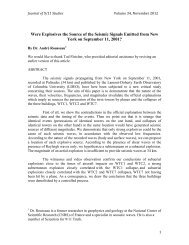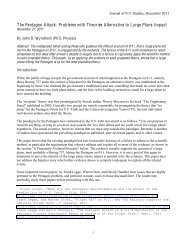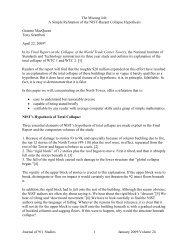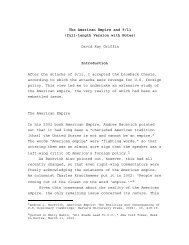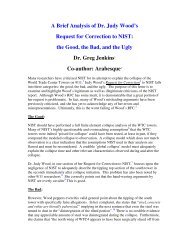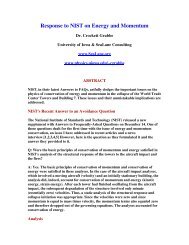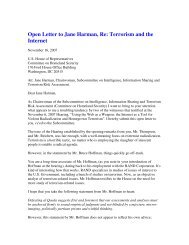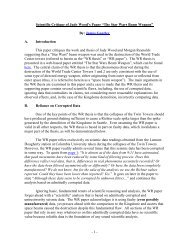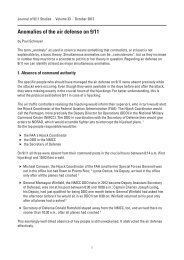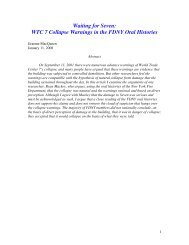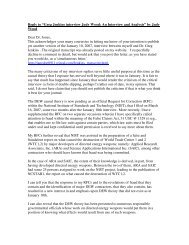interview with dr. judy wood and dr. greg jenkins - Journal of 9/11 ...
interview with dr. judy wood and dr. greg jenkins - Journal of 9/11 ...
interview with dr. judy wood and dr. greg jenkins - Journal of 9/11 ...
Create successful ePaper yourself
Turn your PDF publications into a flip-book with our unique Google optimized e-Paper software.
GJ: If you put metal in a microwave it will reflect <strong>of</strong>f <strong>of</strong> it.<br />
JW: Hey! I’ve been trying a fork in there. I know you’re not supposed to, but I wanted<br />
someone else to do it, to see what happens.<br />
Comment: Judy Wood claimed that she had performed experiments which can turn steel<br />
into dust. A microwave oven will never turn a fork into dust.<br />
GJ: Yes, it’s kinda fun. Also, if you burn a disc, like a CD or something, stick it in the<br />
microwave. It makes a nice little show for you, so you might try that. It’s kinda a fun<br />
thing to do. 22 But, the thing is, I don’t know <strong>of</strong> a way to dustify steel in any situation,<br />
<strong>and</strong>…<br />
JW: [stuttering] Let’s talk about physical principles. If you heat steel… some type <strong>of</strong>…<br />
[a] particular kind <strong>of</strong> element, <strong>and</strong> heat it <strong>with</strong> a particular vapor pressure, it evaporates.<br />
GJ: It evaporates, yes.<br />
JW: So if you have enough temperature, enough energy, you can quickly put a lot <strong>of</strong><br />
energy into something—it’ll go “po<strong>of</strong>”.<br />
GJ: It will evaporate, yes. Correct.<br />
JW: And if you do that to one surface, maybe the surface right below there, it doesn’t<br />
necessarily do the same thing to [it], because there’s a different process going on from<br />
the direct hit <strong>and</strong> the indirect hit.<br />
GJ: That depends on the heat conduction <strong>of</strong> what you’re trying to evaporate.<br />
JW: No. not heat conduction! We’re talking about an effect on a molecule. Why does the<br />
paper towel in your microwave not burn when water heats up?<br />
Comment: Judy Wood appears to try to convey that if ‘some kind <strong>of</strong> energy’ was applied<br />
to a material quickly, then only a local area <strong>of</strong> the material may be rapidly heated. This is<br />
true, but it depends upon the heat conduction <strong>of</strong> the material you are using. That is, if the<br />
time scale in which you pump in the energy is slow compared to the time it takes the heat<br />
to be wicked away via heat conduction, this effect will not occur. If you pump in heat fast<br />
enough compared to the time scale associated <strong>with</strong> heat conduction, you will only locally<br />
heat the material. 23<br />
GJ: Because it doesn’t have water in it.<br />
JW: Right. So the energy does one thing to paper, <strong>and</strong> does another thing to water.



